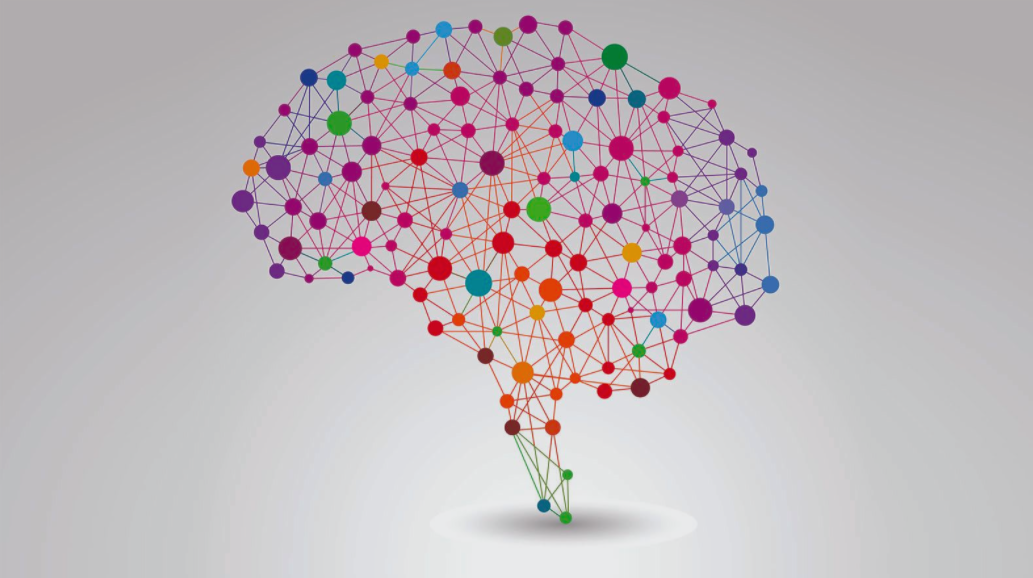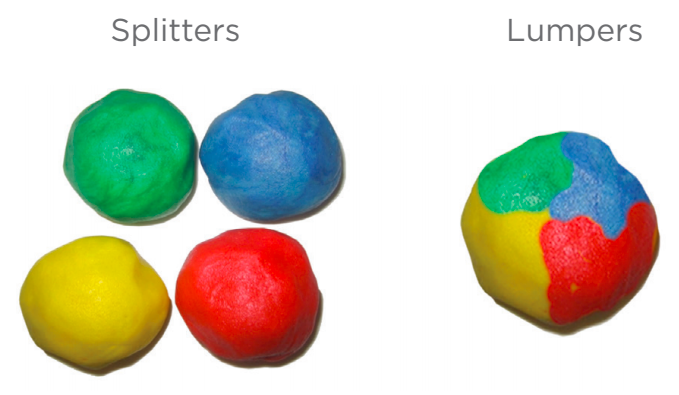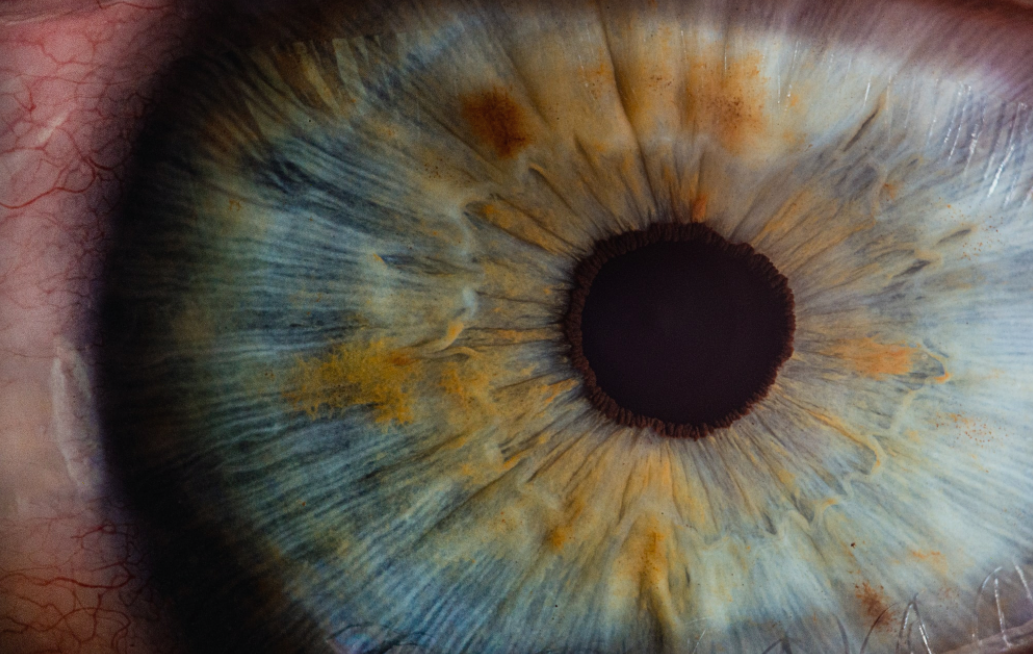The Thinking Tree
 Derek & Laura Cabrera
·
5 minute read
Derek & Laura Cabrera
·
5 minute read
The Thinking Tree illustrates that the many types of thinking we distinguish are all borne of a simple set of cognitive rules. Mastering these simple rules will lead to mastery in the many types of thinking.
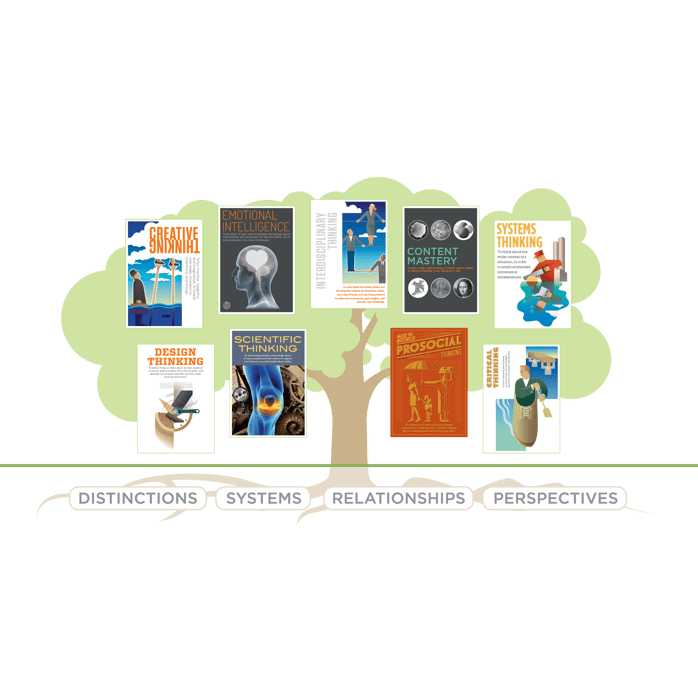 Cognition, Emotion, Conation
Cognition, Emotion, Conation
- Cognition : thinking
- Emotion: feeling
- Conation: motivation
Sometimes, we refer generally to thinking or cognition and include the other two by implication. It is a rare event that one’s thinkings, feelings, and motivations aren’t wrapped up in each other. In everyday life, they do not come as separate streams but are like a braided rope.
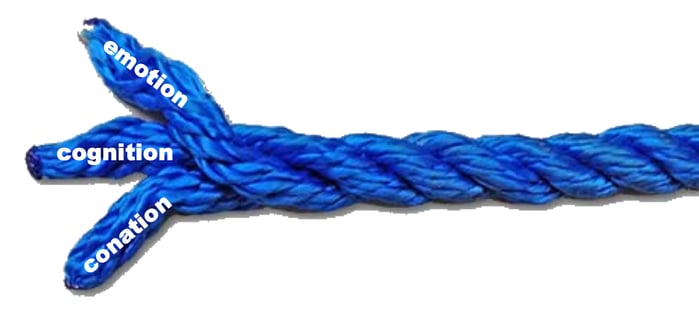 I say the brain and the mind because the two are not always thought of as the same. Indeed, there is a long standing debate (which most scholars have concluded) that the mind and body are not to be separated. In other words, the body is in many ways an extension of the brain or vice versa. The body is like a input-grabbing device for the brain and the two together (brain and body) make up the mind. The body has a number of sensory apparatus' (ears, eyes, hands, nose, skin, tongue) that take in information and feed it to the brain which in turn gives the body information that helps it know what to do.
I say the brain and the mind because the two are not always thought of as the same. Indeed, there is a long standing debate (which most scholars have concluded) that the mind and body are not to be separated. In other words, the body is in many ways an extension of the brain or vice versa. The body is like a input-grabbing device for the brain and the two together (brain and body) make up the mind. The body has a number of sensory apparatus' (ears, eyes, hands, nose, skin, tongue) that take in information and feed it to the brain which in turn gives the body information that helps it know what to do.
Cortex Man
Have you ever wondered how your brain sees your body? That is, when you imagine your body, you likely imagine what you see in the mirror. But how does your brain perceive your body? There is a scientific concept known as cortical homunculus (or "little cortex man") that helps us to understand this brain-bending idea. Cortex Man illustrates the number of neurons that are connected to the various parts of the body. You can imagine that if there are more neurons linking the brain to different parts of the body, the parts that have more connections will appear "bigger," "highlighted," or "distorted" to the brain. In the case of humans, this means that the hands, eyes, and tongue are relatively huge whereas the rest of our body is relatively small. In fact, there are more neurons connecting these three parts of your body than all of the rest of your body combined.
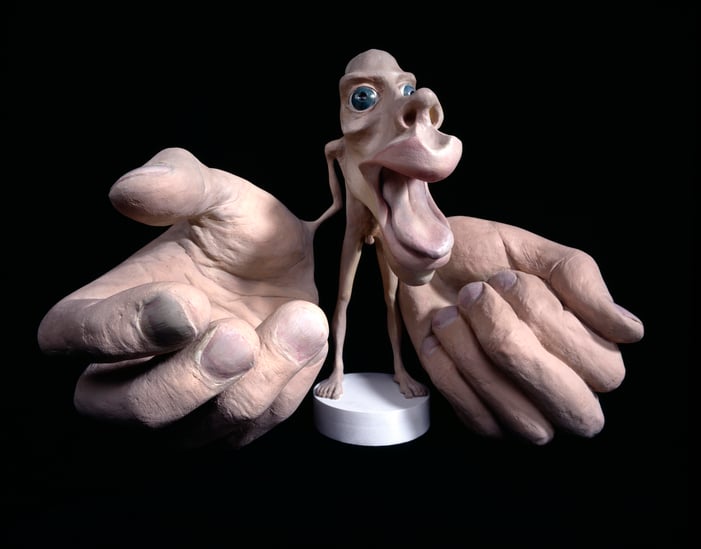
It is because of the wisdom gained from Cortex Man that when we put systems thinking into practice, we make things:
- visual/spatial,
- tactile/tangible, and
- object-oriented.
Types of Thinking
There are many types of thinking. Over the years, different types of thinking have been emphasized as more (or less) important. Today, for example, more employers are seeking emotional intelligence and prosocial thinking. But, at other times, they want analytical thinking, scientific thinking, and critical thinking. They almost always want creativity combined with one or more of the others. Design thinking (which is systems thinking in new clothing) is a current rage. The thinking they want depends on world events, markets, trends, etc. Too much of one type of thinking leads to the need for another type of thinking. None of this is new. But sometimes it is helpful to have an inventory of the various types of thinking so that you can understand them, and compare and contrast them. Here's a list:
.png?width=698&name=thinkerkid%20(1).png)
- Creative Thinking: to be inventive, insightful, and imaginative to create new ideas, innovations, inventions, and energy.
- Systems Thinking: to think about the wider context of a situation to avoid unintended outcomes or consequences.
- Prosocial Thinking: to recognize self as a citizen of a larger community by considering others, developing effective communication and deep listening skills.
- Critical Thinking: to think analytically, identify biases, and sees flaws in logic; and ask intelligent questions to seek deeper understanding.
- Scientific Thinking: to think independently, acknowledge biases, be open minded, and seek evidence to support one's theories about reality.
- Design Thinking: to break things or ideas down to their essential structure, attend to both form and function, and develop the simplest possible solution under existing constraints.
- Emotional intelligence: to be aware of one's internal dialogue and feelings; and to have empathy and compassion for self and others.
- Metacognitive: to be aware of and understand one's own thinking processes.
- Object-oriented: to go beyond memorization and recall of information to develop complex comprehension.
- Deep understanding: to go beyond memorization and recall of information to develop complex comprehension.
- High transfer: to apply knowledge that was built in one domain or experience to facilitate learning in another domain or experience.
-
Object-oriented: to represent concepts/ideas as "objects" that have structure and patterns of interaction.
While it can be helpful to break these types of thinking apart, like the braided rope they really occur all together. One of the best things you can do is not to make so many distinctions about types of thinking. As they are all necessary, there is little evidence that they are separate, and they are born of the same root universals. A preponderance of research shows that underlying all of the above thinking types are four simple metacognitive patterns called DSRP:
- Making distinctions between and among ideas. (D)
- Organizing ideas into systems of parts and wholes. (S)
- Identifying relationships between ideas. (R)
- Taking many perspectives on any idea. (P)
I personally think of systems thinking as synonymous with generalized thinking. Because the term systems is an abstract and very general concept that can refer to nearly anything (a bicycle, coffee mug, concept, bug, economy, company, skeleton, etc.), it begs the question: when we are thinking what are we thinking about? Well, we are thinking about systems? This begs the question: As we are thinking about these systems what can we hope for? Well, it's natural for us to hope that our thinking adequately captures the reality of whatever system we are thinking about. This means that the complexity of our thinking attempts to match the complexity of the thing we are thinking about. Otherwise, why would we think about it? We don't think about things in order to get it wrong. We think about things in order to get it as right as is possible.
Let's take yet another angle on this idea of systems thinking being synonymous with thinking. If all of these types of thinking I mentioned above are thinking. And, if they occur together, more like a braided rope. Then isn't it true that these types of thinking are a system of thinking? If that is the case, systems thinking also captures this idea that thinking itself is a system that involves a lot of different angles and variables. We very rarely only need to think analytically or scientifically. In fact, Rita Levi-Montalcini, the Nobel Prize Winner in Physiology of Medicine in 1986 exclaimed, "I don't believe there would be any science at all without intuition." Einstein once said, "The whole of science is nothing more than a refinement of everyday thinking." The truth is that these types of thinking are hopelessly intertwined. As Richard Feynman once said,
"If our small minds, for some convenience, divide this glass of wine, this universe, into parts—physics, biology, geology, astronomy, psychology, and so on—remember that nature does not know it! So let us put it all back together, not forgetting ultimately what it is for. Let it give us one more final pleasure; drink it and forget it all!”
If it helps us to better understand these types of thinking by distinguishing them from each other, that is okay. But we must remember that they are not actually separate from each other in nature. They occur simultaneously and near constantly and they are all borne of four simple rules.
21st Century Skills
The World Economic Forum has defined a new set of skills most required for the jobs of the future. Their list includes the 10 items below. Note that Systems Thinking/DSRP (i.e., metacognition) is required and foundational for all of the skills marked in bold:
- Analytical thinking and innovation,
- Active learning and learning strategies,
- Creativity, originality, and initiative,
- Technology, design, and programming,
- Critical thinking and analysis,
- Complex problem solving,
- Leadership and social influence,
- Emotional Intelligence,
- Reasoning, problem solving, and ideation, and
- Systems analysis and evaluation.
Importantly, the World Economic Forum emphasizes that these skills are a mixture of hard and soft skills, with a notable decline in memory-related skills and management functions.
.png?width=150&height=150&name=CRL%20GOAT%20Logo%20(4).png)
